Pilot Ladder On Ships: Rigging And Maintenance Procedure
Pilot Ladder Requirements
The pilot ladder is a special type of rope ladder used on board ships for embarkation and disembarkation of maritime pilots. It is one of the very first things, which will give an impression to the pilot about the crew and the master on board – an extremely important thing to consider for the ship’s crew.
The pilot ladder should, therefore, be maintained in good condition and rigged properly for safer transfer of personnel. Needless to say, even the minutest negligence can lead to a major mishap.
The crew in charge of rigging the pilot ladder should use their knowledge and also follow the instructions from the bridge. During pilot transfer using a ladder, a person’s life is directly at stake and chances of accidents are extremely high. Officers and the crew involved with the process should thus consider all safety precautions required for the process.
Real Life Incident
On a small cargo ship, a pilot was about to disembark with a good lee. The bottom rung of the pilot ladder was slightly above and clear of, the deck of the launch. The pilot inspected the ladder as best he could from the main deck to ensure it was properly rigged and secured and free of any obvious defects. All appeared correct.
But as soon as the pilot committed his full weight to the ladder, the ropes on each side of the ladder parted simultaneously at the point where they went over the rounded fishplate at the sheer strake. The pilot fell two meters to the deck of the pilot launch, bruising and spraining his right foot and ankle which took the impact of the fall. His injuries could have been much worse had the freeboard of the vessel been greater.
On investigation, it was found that the root cause of the accident was the failure of the pilot ladder due to inadequate maintenance and inspection.
Read more real life incidents and case studies here.
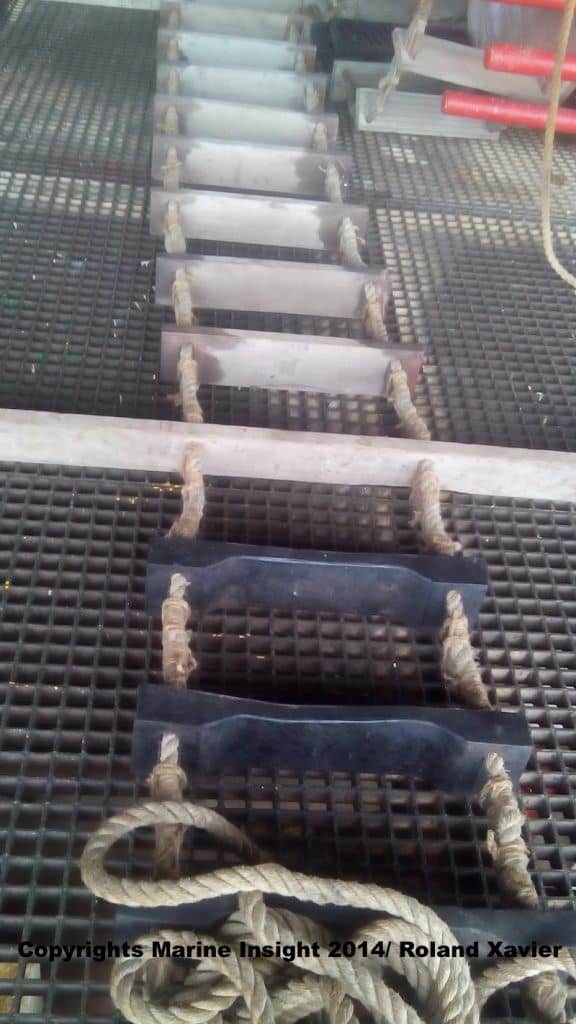
Rigging of Pilot Ladder
A pilot ladder should be capable of covering the whole length from the point of access to the water level. The height from water level is informed to the bridge by the port control or the pilot himself depending on the height of the pilot vessel.
Here’re few points to consider while rigging the pilot ladder:
- The top portion or head of the pilot ladders should be secured at the strongest point of the vessel
- Pilot ladder should be positioned and secured so that it is clear of any discharges from the ship, with parallel body length of the ship and as far as practicable within the half way length (midship) of the ship
- All steps of the pilot ladder should rest firmly against the ship side. In certain ships, where constructional features such as fenders or rubbing band prevent the implementation of above safety features, special arrangements are to be made for safe embarkation and disembarkation
- Two man ropes to be between 28 mm and 32 mm diameter and made of manila rope or other material which gives firm grip for climbing the ladder, should be rigged along the side of pilot ladder if requested
- During night, the whole length of the pilot ladder, point access, and egress should be well illuminated. A life buoy with self-igniting light and a heaving line should be kept ready. Hand hold stanchions and bulwark ladder are to be used if required.
- If the point of access from sea level is more than 9 meters, a combination ladder should be used. A combination ladder is a conjunction of the pilot ladder and accommodation ladder.This is a common arrangement found on vessels with high freeboard. The accommodation ladder is rigged in such a way that it leads aft of the vessel and has a slope angle of not more than 55 degrees.
Actions to be Taken by Officer of the Watch Before Using a Pilot Ladder
The following pilot ladder specifications are to be taken care of by the officer of the watch for utmost safety during using a pilot ladder:
- Collect the necessary information like VHF channel used by the pilot, position of pilot ground and other services. This information can be obtained from Nautical Publication NP 286 ALRS (Admiralty list of radio signals) for the particular port or from guide port entry. Vessel Traffic Services (VTS) of the particular area also provides such information.
- Maintain watch on VHF channel, which is used by the pilot. This is mostly a dedicated channel different from the channels used by port control and Vessel traffic scheme (VTS).
- Calculate the ETA (Estimated time of arrival) to the pilot boarding ground, observe prevailing weather condition and sea state and the same has to be reported to the master
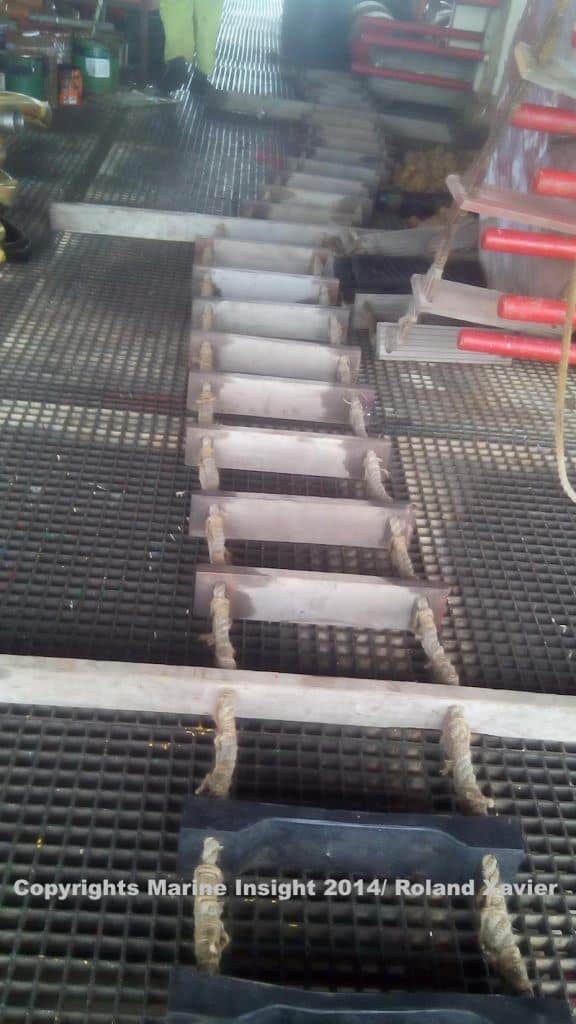
- Contact the Pilot on the VFH channel and give information such as ETA to pilot ground, draught and freeboard of the vessel, the length of the vessel, type of propeller, vessel current speed over ground and course made good etc.
- Ask and receive information such as berthing prospectus, the side pilot ladder to be rigged, the height of pilot ladder from water level, speed and course to be maintained and report all the data received to the master
- Monitor the pilot vessel, maintain proper communication between the pilot vessel and own ship. The officer responsible should be present near the point of access to receive the pilot on board or when he disembarks. The pilot on board and disembarkation time should be noted and recorded.
Maintenance of Pilot Ladder
- Pilot ladders are to be regularly inspected for wear and tear of side ropes, missing wedges, and damages on the steps. The steps should never be painted and should be kept clean, free from oil and grease.
- All the steps should be equally spaced between the side ropes and the distance between two steps should be uniform.
- Steps should be always horizontal. Any faulty steps found should be replaced immediately.
- The side ropes are made of manila rope. They should be continuous and free from ties and joints below the first step of the pilot ladder. The shackles used to secure the pilot ladder should have equal strength and durability same as that of side ropes used.
- Once the pilotage operation is over the pilot ladder should be secured instead of left hanging on the ship’s side. The pilot ladders should be stowed in dry and well-ventilated space, clear of the deck and fitted with a cover to prevent the ladder from sunlight, chemical and paint spills.
- It is to note that Pilot ladders are solely used for the purpose of embarkation and disembarkation of the personnel. It should never be used for any other purpose like draught reading or any other maintenance work. Pilot ladders should be well maintained and properly stowed which ensures safe, convenient and unobstructed passage while pilot transfer. More information on pilot ladder regulations regarding construction and specifications can be found in SOLAS chapter V under the regulation safety of navigation.
The above mentioned are some of the most important points that should be considered for maintenance and rigging of pilot ladders on board ships.
Over to you…
What according to you are the most important points that must be considered while handling pilot ladder on ships? Let’s know in the comments below.
Disclaimer: The authors’ views expressed in this article do not necessarily reflect the views of Marine Insight. Data and charts, if used, in the article have been sourced from available information and have not been authenticated by any statutory authority. The author and Marine Insight do not claim it to be accurate nor accept any responsibility for the same. The views constitute only the opinions and do not constitute any guidelines or recommendation on any course of action to be followed by the reader.
The article or images cannot be reproduced, copied, shared or used in any form without the permission of the author and Marine Insight.
Do you have info to share with us ? Suggest a correction
Latest Shipboard Guidelines Articles You Would Like:
Subscribe To Our Newsletters
By subscribing, you agree to our Privacy Policy and may receive occasional deal communications; you can unsubscribe anytime.



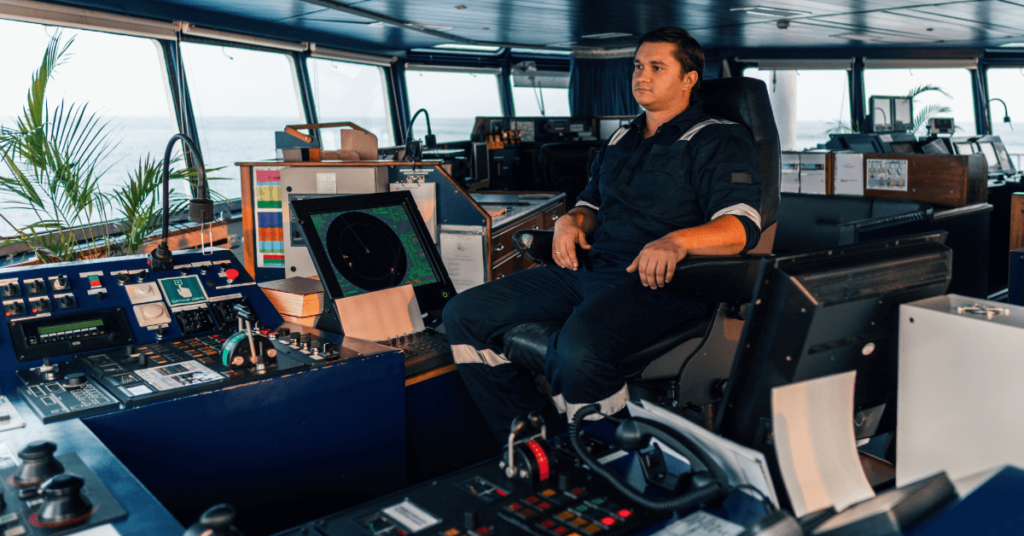
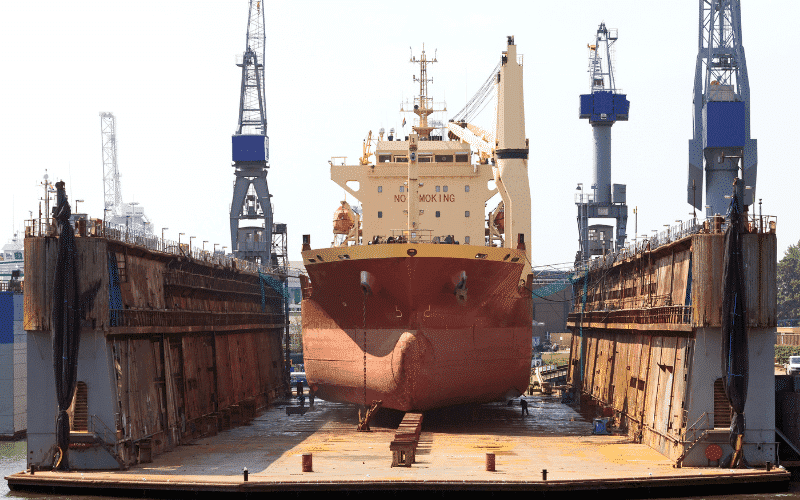

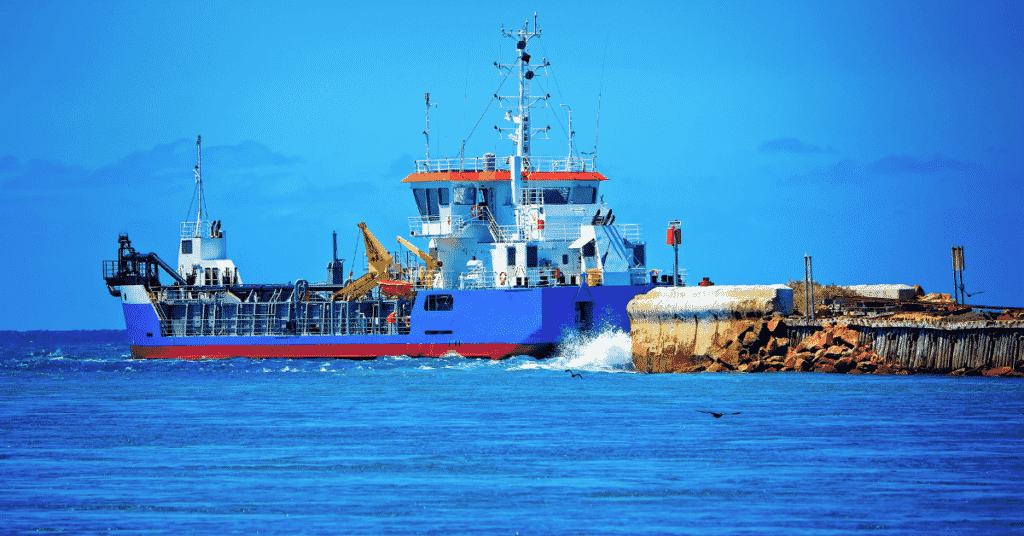
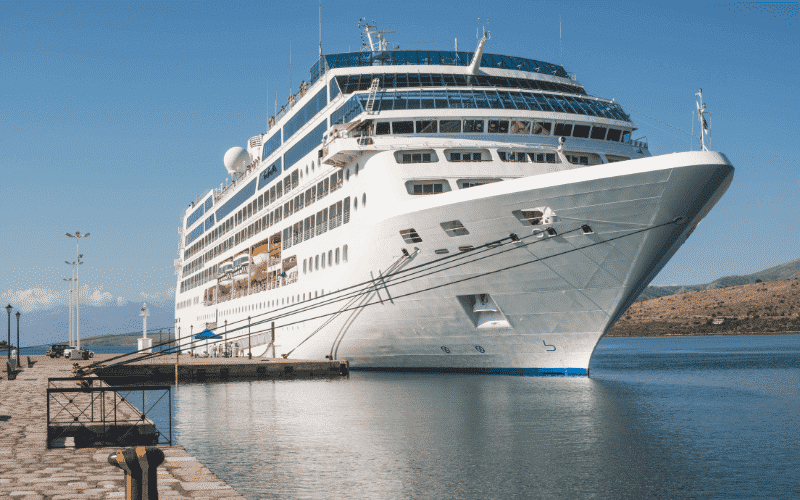
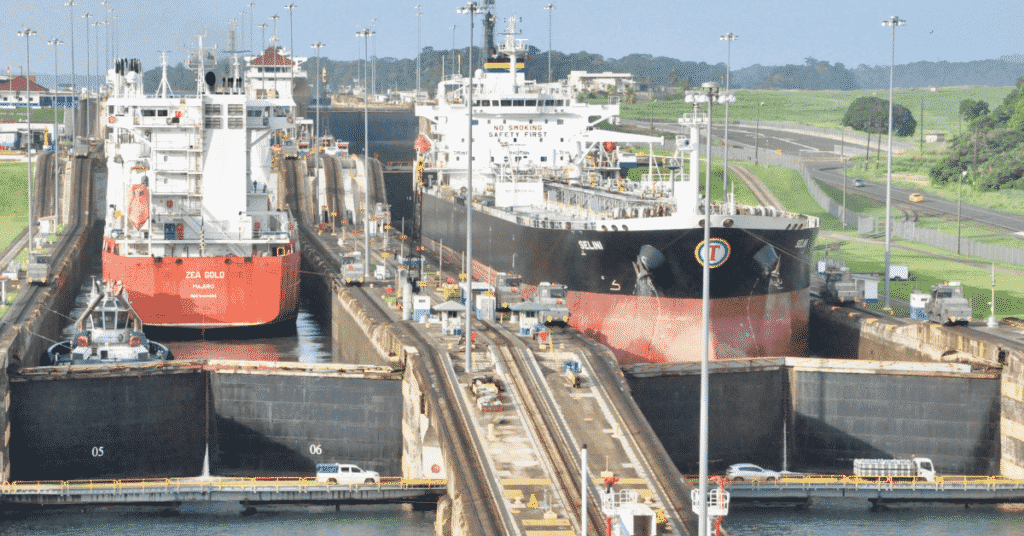

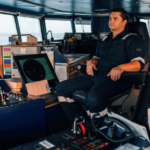
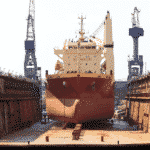

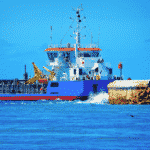
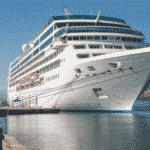
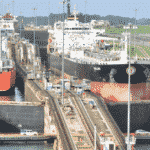
Tks and realy appreciate for the lesson. Stop Accident For Everyone/SAFE.
Very thought provoking article.
Interesting photograph of the Pilot boarding, two questions:
(1) is the pilot wearing some kind of lifejacket, in event of a fall ?
(2) why are no spreaders visible in the photo ?
Crew/officer should climb down ladder 1/2 way prior to pilot doing so, usually while approaching boarding area. If YOU think that’s too dangerous for crew/officer, then why do you expect pilot to do it? Every Master should have his crew rig a ladder without supervision one day in port when time permits. Then that Master should climb down the ladder all the way to water and then back up to deck. Why? It will teach Masters that they should appreciate the pilots first task to accomplish safely. It will remind Masters the importance of having an officer watch the ladder while it is being rigged, not moments before the pilot steps on it (too late). If that Master doesn’t trust his crew to do it right for the Captain, why would they do different for pilot? The time to “know” the ladder was rigged correctly and has been maintained properly is NOT at 0300 after the mate was called at the last minute to meet pilot at ladder (barely) and bring him to the bridge. Bad routine procedures lead to accidents. Consider ladder rigging review with all deck crew during port/sea day during daylight, especially if many crew are new, or the Bosun is a new hand.
Thx appreciate the lesson
The minimum rope diameter is 18mm not 28mm, according to IMO Resolution A.1045(27)
Adopted on 30 November 2011
@Dan: The author has specified this diameter for the Man-rope under SOLAS Chapter V/23 sect-7.1.1.1.
18mm requirement is for the side ropes.
how to unrig pilot ladders ?
Some important points missing (most common erros found): retrieving lines must be tied ABOVE last spreader and not left hanging, as those often get tangled on the pilot boat fenders; bottom of accommodation ladder must be at least 5m above the water, to allow for safe operation of the pilot boat below it; pilot ladder must pass at least 1,5m above accomodation ladder to allow for safe transfer; both must be firmly tied to the ship side so as to maintain contact all the time, even whith the ship rolling.
@Hans: Thank you so much for these micro-points which is critical for a safe pilot operation.
Dear MarineInsight,
Please inform people more precise about the extend of inspections and testing to be done according to the standards that both the Pilot (ISO799) and Embarkation (ISO5489) ladders are build to.
These ladders are, as we all know, high risk equipment and inspite of this fact the maintenance requirement is not mentioned in IMO but instead its refered to the pilot ladder standard and for the embarkation ladder nothing is mentioned in IMO.
Marine Insight Team,
Thanks for continuously sharing your thoughts.
Question, with some repairs on pilot ladders when will its certificate be void?
I mean, if the side rope is replaced, will it be voided now?
Would appreciate if a reference can be sighted also.